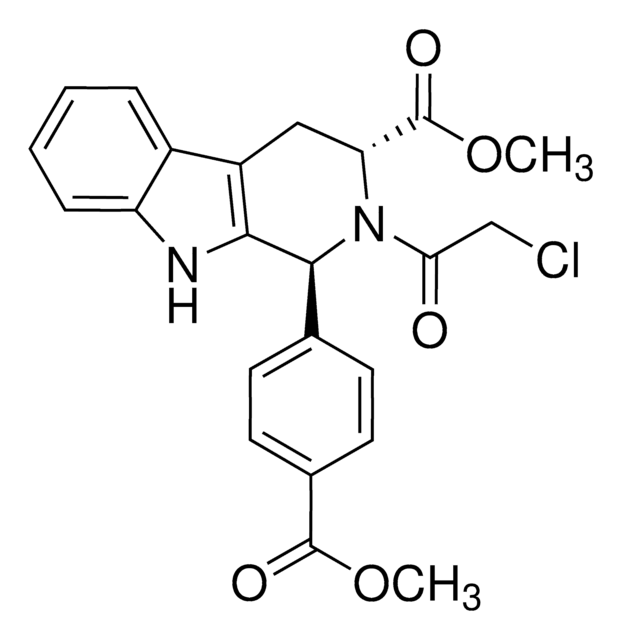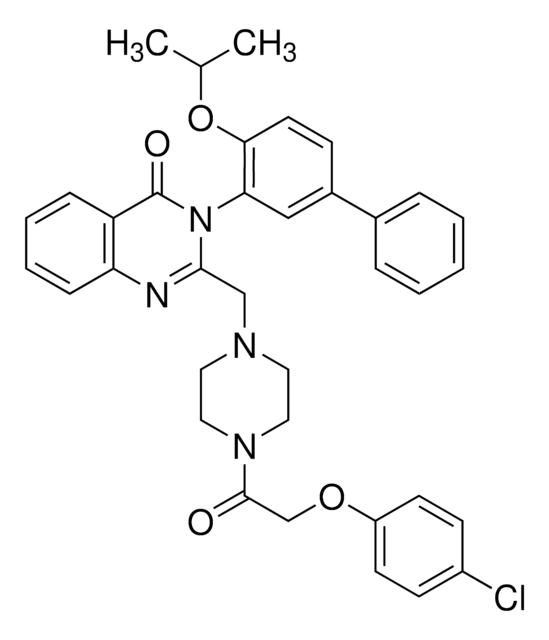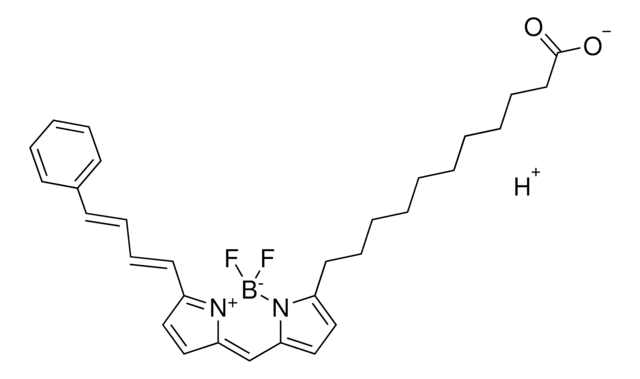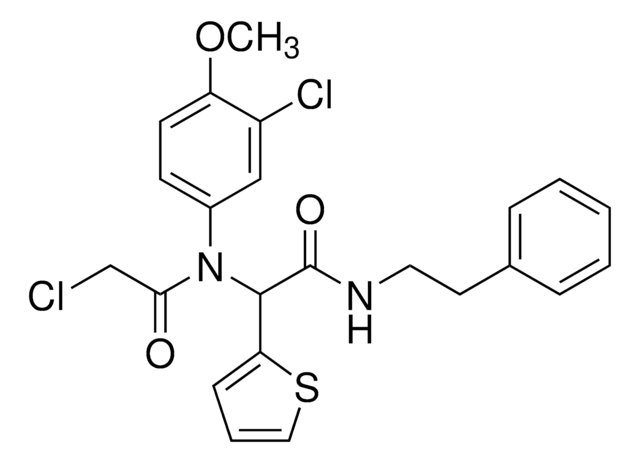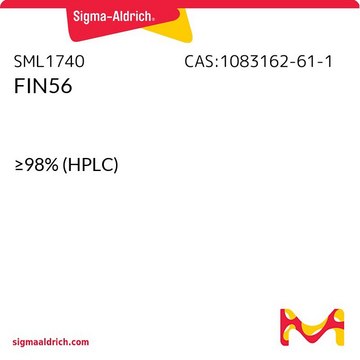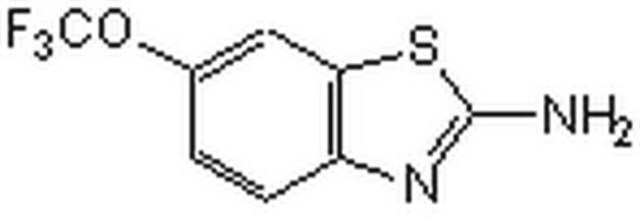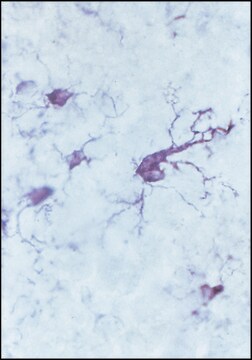Kluczowe dokumenty
SML0521
ML 210
≥98% (HPLC)
Synonim(y):
CID 49766530, ML-210, [4-[Bis(4-chlorophenyl)methyl]piperazin-1-yl]-(5-methyl-4-nitro-1,2-oxazol-3-yl)methanone
About This Item
Polecane produkty
Poziom jakości
Próba
≥98% (HPLC)
Postać
powder
kolor
white to beige
temp. przechowywania
2-8°C
ciąg SMILES
Cc1onc(C(=O)N2CCN(CC2)C(c3ccc(Cl)cc3)c4ccc(Cl)cc4)c1[N+]([O-])=O
InChI
1S/C22H20Cl2N4O4/c1-14-20(28(30)31)19(25-32-14)22(29)27-12-10-26(11-13-27)21(15-2-6-17(23)7-3-15)16-4-8-18(24)9-5-16/h2-9,21H,10-13H2,1H3
Klucz InChI
VIBHJPDPEVVDTB-UHFFFAOYSA-N
Zastosowanie
Działania biochem./fizjol.
Hasło ostrzegawcze
Warning
Zwroty wskazujące rodzaj zagrożenia
Zwroty wskazujące środki ostrożności
Klasyfikacja zagrożeń
Acute Tox. 4 Oral
Kod klasy składowania
11 - Combustible Solids
Klasa zagrożenia wodnego (WGK)
WGK 3
Temperatura zapłonu (°F)
Not applicable
Temperatura zapłonu (°C)
Not applicable
Certyfikaty analizy (CoA)
Poszukaj Certyfikaty analizy (CoA), wpisując numer partii/serii produktów. Numery serii i partii można znaleźć na etykiecie produktu po słowach „seria” lub „partia”.
Masz już ten produkt?
Dokumenty związane z niedawno zakupionymi produktami zostały zamieszczone w Bibliotece dokumentów.
Nasz zespół naukowców ma doświadczenie we wszystkich obszarach badań, w tym w naukach przyrodniczych, materiałoznawstwie, syntezie chemicznej, chromatografii, analityce i wielu innych dziedzinach.
Skontaktuj się z zespołem ds. pomocy technicznej
